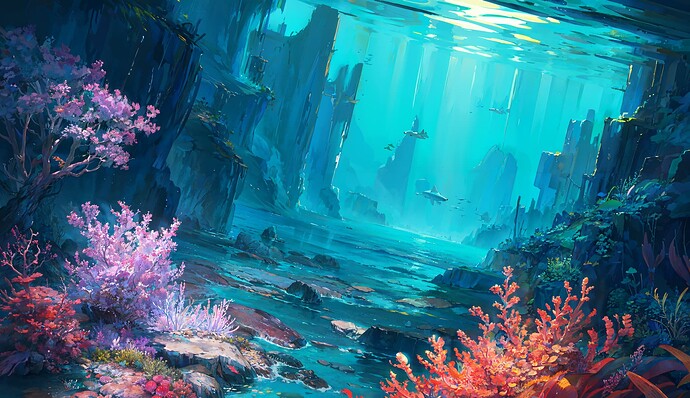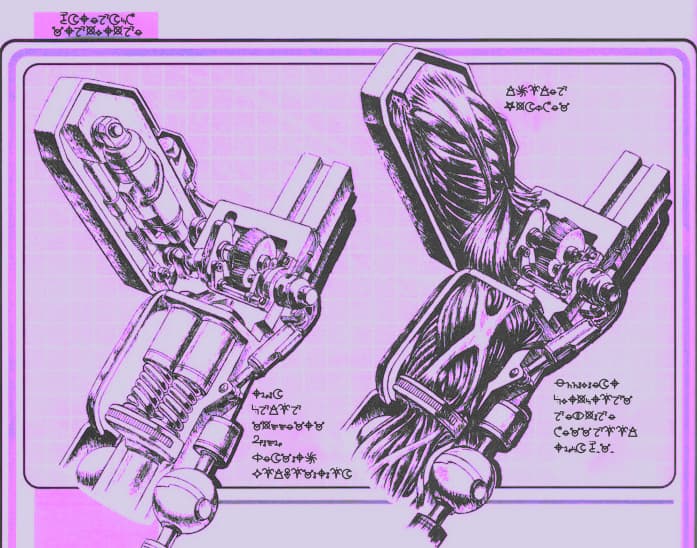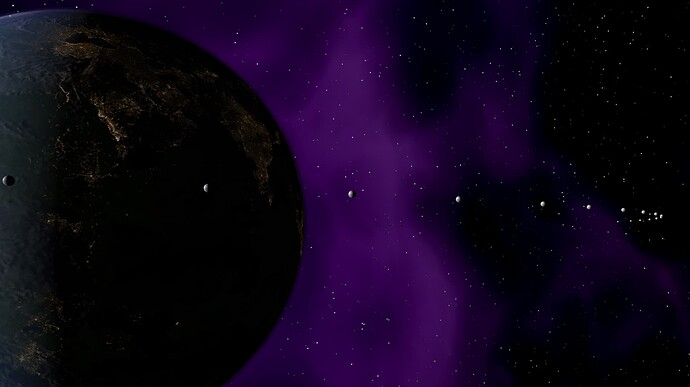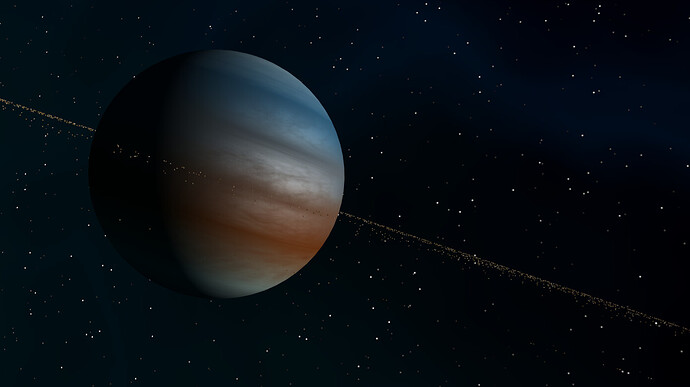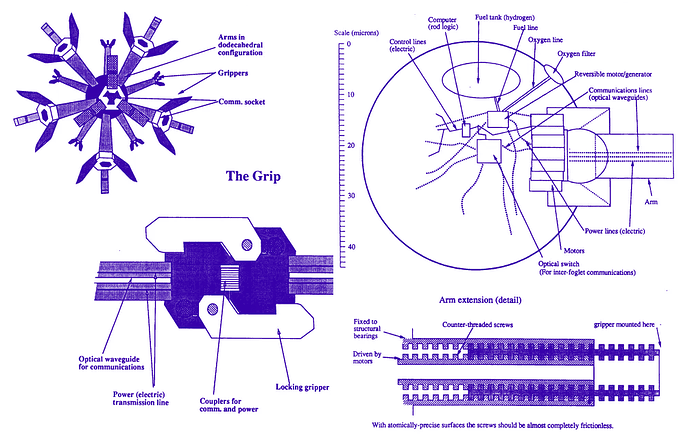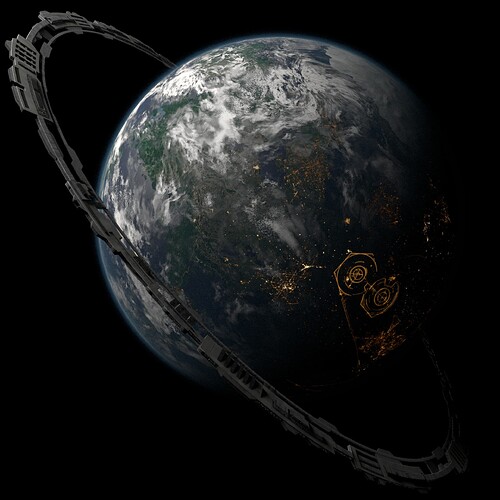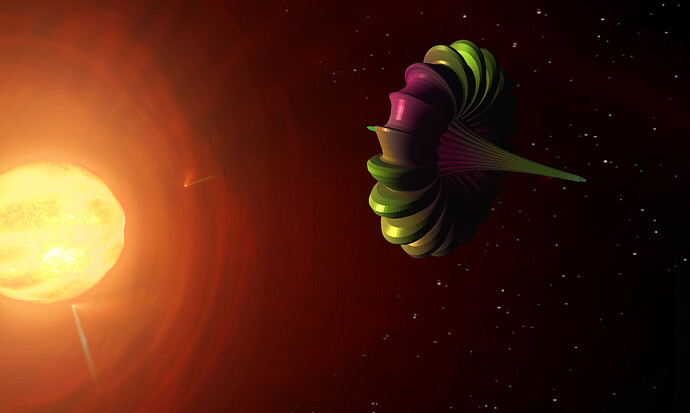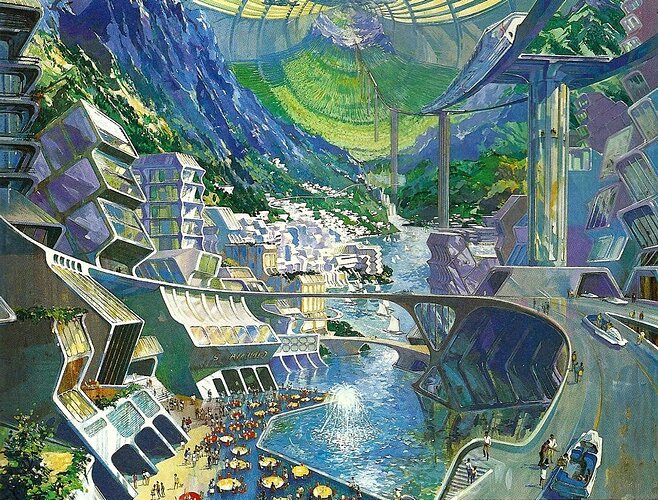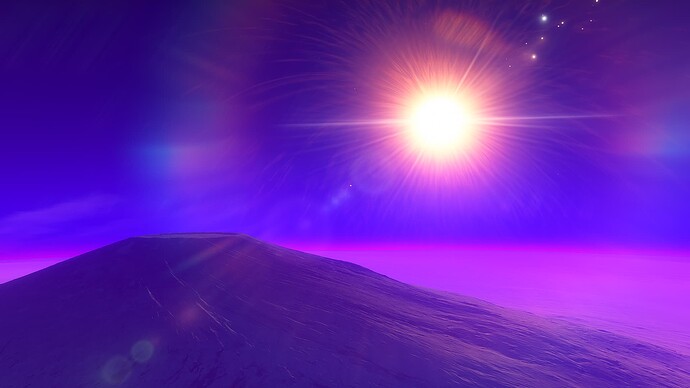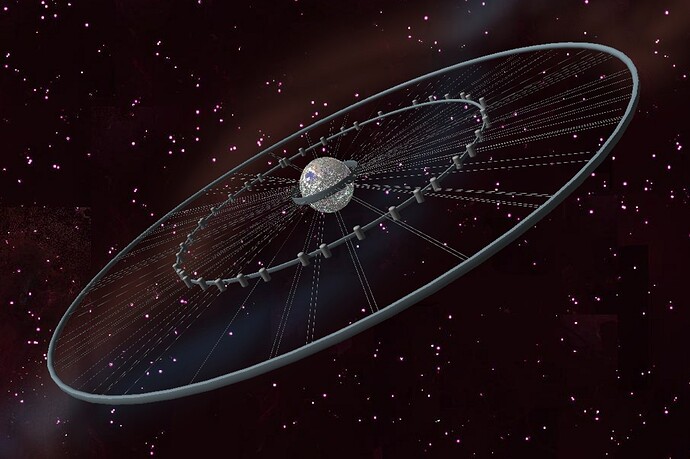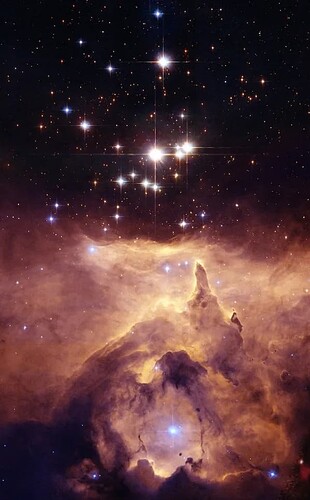
 PROGRESS REPORT
PROGRESS REPORT
Progress Report is a weekly magazine organized by the Imperial News Agency Starlight News and the Ministry Of Technology. Progress Report covers the technologies, processes and programs that the Ministry Of Technology develops and coordinates, in it’s never ending mission to advance our people through the stars.
The recent Intensive Research Period organized by the Ministry Of Technology has, thus far, been most successful. 26 Research Supercomplexes located in Quadrants 1, 2 and 3 have been activated, as well as 514 other smaller Complexes in Quadrants 4 to 13.
A schematic illustrating the possible industrial and military applications of the new myomer.
The Biophysics SubDivision has produced the first prototypes of a new version of the old carbon-meshed industrial organic filaments commonly used in most industrial machinery and production arrays. The electromechanical actuating material seems to possess greater tensile strength than the previous myomers, and seems to be far more conductive. It is even theorized to be able to sustain monopole enhancements without the need of specialized biometallic strands. These properties would make it a valuable replacement technology for organic fusion reactors and other machines utilizing high conductivity wiring. The possible applications of this new material on living organisms are now being researched by the Neogenics Division. However, further testing is still required to properly ascertain the true properties of the new myomer. Possible tests will include prolonged exposure to extreme temperatures, high tension and repeated flexing.
The Pylbire SphereHab Ring, constructed in 5012 P.E.
The Evolutionary Biology SubDivision has been studying the development of lifeforms in zero gravity environments with different atmospheric makeup compositions and pressures, temperature ranges, available resources and presence of competition. The tests, ongoing since 5034 P.E., have been carried out in a large array of specifically constructed self contained spherical habitats in orbit around the planet of Pylbire in Quadrant 5. It has been observed that the test organisms, who have been modified to possess a rate of mutations increased by millions of times, have now reached the first phases of the complex multicellular stage and seem to converge towards similar evolutionary solutions in similar environments. Higher atmospheric densities lead to a development of paddle-like appendages, while lower atmospheric densities lead to pressurized digestive systems that would propel the organism through the ejection of digestive gases. Depending on the fluctuation rapidity and amplitude of the temperature ranges, various heating or cooling methods like fur or sweat were developed. Interestingly enough, in an habitat with void-like temperatures and pressure, as well as the presence of various other competing species, some of the organisms developed though carapaces, the strongest pressurized digestive systems, and the ability to eject cone-shaped spikes from their carapace towards the competing lifeform during an hostile encounter. The resemblance of this to military ship construction doctrines and Ramming projectiles has garnered the interest of the Ministry Of Defense.
The Qucazny Amat Farming Complex.
The Particle Physics SubDivision has finalized it’s prototype of the enhanced Sub-Stellar Amat Miners that will be placed in orbit around large gas giants and brown dwarfs. The new model is a fusion of regular stellar collectors and planetary quadriloops: an array of multicolliders is placed in the center of the monopole-doped spinning quadriloop, so that the currents induced in the plasma collide directly on the large energy collectors, which then redirect the antiparticles to the central multicollider where they are cooled and stored in electromagnetic traps arranged radially around the central multicollider. The Collider Quadriloops, as they have been called, are now being tested extensively in the Amat Farming Complex around the gas giant Qucazny in Quadrant 7, where they are being compared in performance with their older counterparts.
A schematization in Austral made for a team of specialist of the Union Of Emerald.
The NanoRobotics Subdivision has made notable advancements in various kinds of Utility Fog dedicated to construction projects, upgrading the efficiency of the individual foglet modules. The modules are now able to replicate faster than before, decreasing construction times by 17%. The Ministry Of Infrastructure is already requesting usage of the new Fog in the construction of the Belt Of Thaievia in Sector 11, as well as implementing the new Fog in other maintenance and planetary construction projects. The new Utility Fog has now been optimized to achieve major dynamicity and heightened responsiveness during the reproduction of objects like utensils and additional appendages, greatly improving pre-existing Effector Frames and greatly helping those working in non-automated maintenance. Excessive Replication prevention modules were also improved to nullify the chances of a Grey Goo scenario.
Antimatter Beams impact zones on Karmeeyli.
Under request by the Ministry Of Defense and authorization of the Council Of Clades, the Particle Weaponry SubDivision has began military testing on the Planetary Testing Site of Karmeeyli in Quadrant 12. While antimatter bombs and relativistic ramming weapons were also tested on the southern pole of the planet, the main focus of the testing was the effectiveness, energetic output and blast radius of the newly developed Antimatter Pulser Beams. Using monopole-doped rotating rails to generate a spinning magnetic field, a brief stream of antimatter particles is focused and accelerated by the field towards the intended target. Depending from the size of the pulsed stream, Antimatter Beams can go from achieving the effects of a simple plasma grenade, to a high mass Relativistic Ramming Weapon. While hydrogen or helium powered proton and electron beams, as well as Biometallic Relativistic Weapons, still prove to be more efficient, Antimatter Beams have proven to be highly successful during the tests.



